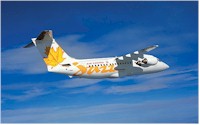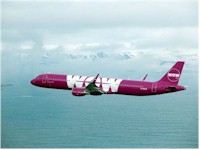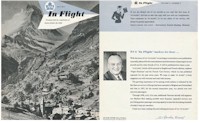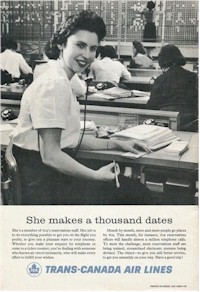
More Airlines Turn To UAVs For Aircraft InspectionUsing an unmanned aircraft to inspect an airliner would have been unthinkable just a few years ago. Now low-cost carrier EasyJet plans to deploy what it calls “drones” or unmanned aerial vehicles (UAV) at 10 maintenance bases across Europe by the end of 2016, to help inspect its Airbus A320s for hail and lightning-strike damage. The developers of the system to be used by EasyJet, U.K. companies Blue Bear Systems Research and Createc, are now working with Thomas Cook Airlines to inspect larger Airbus A330s. They have a vision of a future in which a UAV is launched every time an airliner reaches a gate to continuously monitor entire fleets for damage. Blue Bear and sensor specialist Createc began working on using unmanned aircraft systems (UAS) to inspect U.K. nuclear facilities for contamination. “We were doing indoor complex environment inspection work for the nuclear industry, which has a lot of similarities to the work we are now doing for aircraft,” says Gavin Goudie, Blue Bear director of operations. For full article follow this link.
|
 |
 I attended the 2015 Vancouver Airline & Aviation Collectibles Show in Richmond, BC. on Saturday, October 24, 2015 hosted by Henry Tenby. It was a great show with lots of interesting memorabilia. While there I met Patricia and Mark Wickson manning a table full of older aviation magazines. What drew my attention was the variety and age of some of the magazines on display. Some went back to 1932!
I attended the 2015 Vancouver Airline & Aviation Collectibles Show in Richmond, BC. on Saturday, October 24, 2015 hosted by Henry Tenby. It was a great show with lots of interesting memorabilia. While there I met Patricia and Mark Wickson manning a table full of older aviation magazines. What drew my attention was the variety and age of some of the magazines on display. Some went back to 1932!
Marks father (now in his 90's) has been collecting these magazines since he was 12 years old and has recently downsized in order to move into a smaller condo.
There was one copy of The Aeroplane from 1937 that stood out as this was the year that Trans-Canada Air Lines came into being.
Mark and Patricia are interested in finding a good home for the collection, and would prefer to sell the whole lot together or all issues of a magazine together. They have a total of 87 banker size boxes of magazines.
Most publications are related to models (Aero Modeller 1942 - 1979, Model Airplane News 1932 - 1972) and/or Aviation related - (The Aeroplane - 1934 - 2013, Air Classics 1967 - 1994) as well as many more titles as well.
If you or someone you know may be interested in these magazines, please contact Mark or Patricia Wickson at
For a full list of all magazines please click on the PDF link below.
 Acronyms, Abbreviations & AOG's -
Acronyms, Abbreviations & AOG's -
Today it seems that new words derived from acronyms and abbreviations seem to be routinely added to our vocabulary. To the chagrin of language purists and articulate people everywhere, “words” such as Mpeg, PDF, XLS, iPad, App, DVD and (remember) FAX are overheard frequently in conversation and cross over several languages.
However, those of us in the airline industry have been speaking in acronyms during our entire careers. Many of the which (particularly the most colourful ones) have been inherited from the military, of course.
 Aircraft (BA-146) (pictured), Airlines (AC), Airports (DFW), Instruments (VSI) , Auxiliary Power Unit (APU), Airline operations (MOC), Associations (IATA) and Reservations (PNR) are just a few of the contexts where acronyms are commonly used. A detailed list can be found at GOFIR (Global Operations Flight Information Resource).
Aircraft (BA-146) (pictured), Airlines (AC), Airports (DFW), Instruments (VSI) , Auxiliary Power Unit (APU), Airline operations (MOC), Associations (IATA) and Reservations (PNR) are just a few of the contexts where acronyms are commonly used. A detailed list can be found at GOFIR (Global Operations Flight Information Resource).
A very common acronym in the maintenance world is “AOG” which means Aircraft On Ground. My first assignment on my first day with Air Canada in Toronto Purchasing and Supply was to “jump in” with the “AOG” driver. At first I wondered what kind of vehicle an “AOG” was. I spent the next few hours in a van driven by what seemed like a Madman while he picked up and delivered parts from incoming flights required by aircraft maintenance. He explained to me that (in our context) “AOG” was the highest shipping priority and critical to the airline operation. It must be noted that the majority of parts shipped in this manner are not for actually grounded aircraft but for planned maintenance work throughout the day or overnight. However, when an aircraft is genuinely "AOG" the situation is handled by a full team of professionals.
From a greeting card received –
Ever notice the older we get, the more we are like computers?
We start out with lots of memory and drive,
Then we eventually become outdated,
Crash at odd moments,
Acquire errors in our systems,
And have to have our parts replaced.
 It looks like Icelandic airline Wow Air is taking a family approach to its fleet strategy, judging by registrations for four
It looks like Icelandic airline Wow Air is taking a family approach to its fleet strategy, judging by registrations for four
of its aircraft:
TF-MOM
TF-DAD
TF-BRO
TF-SIS


